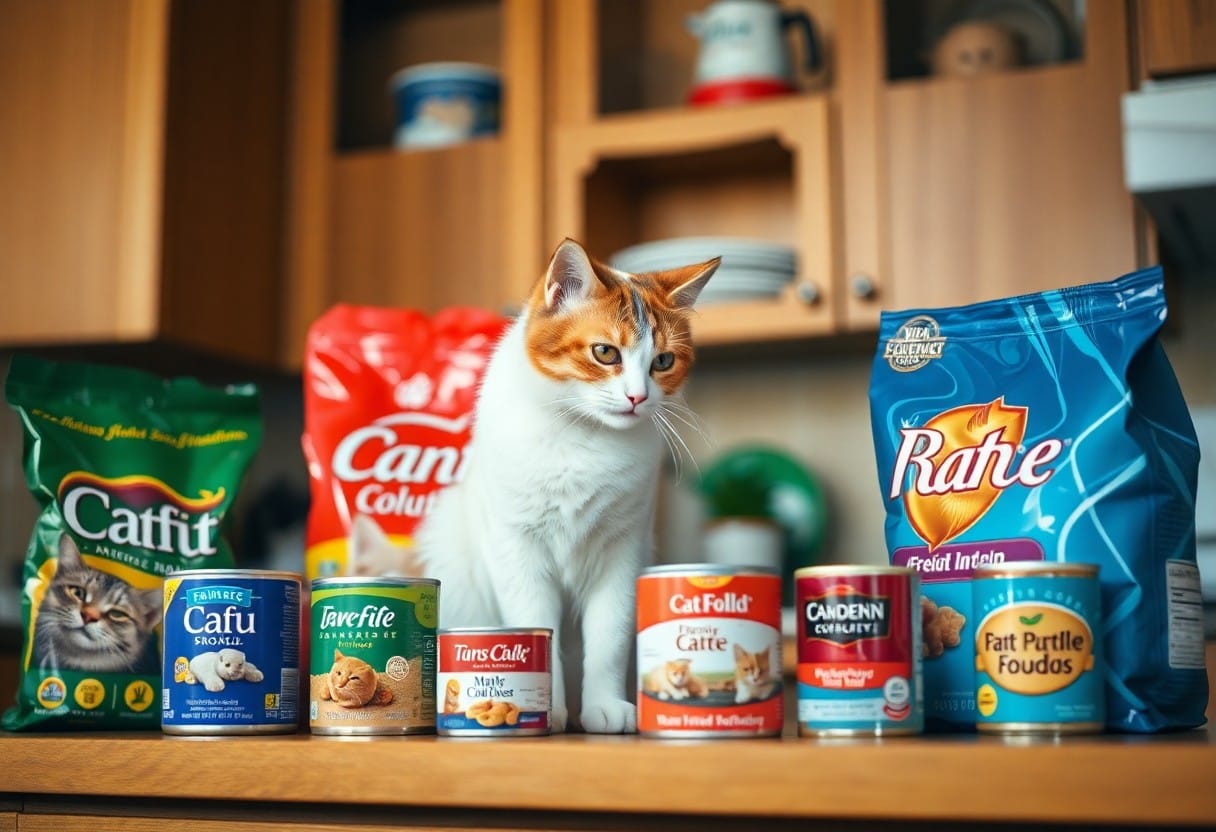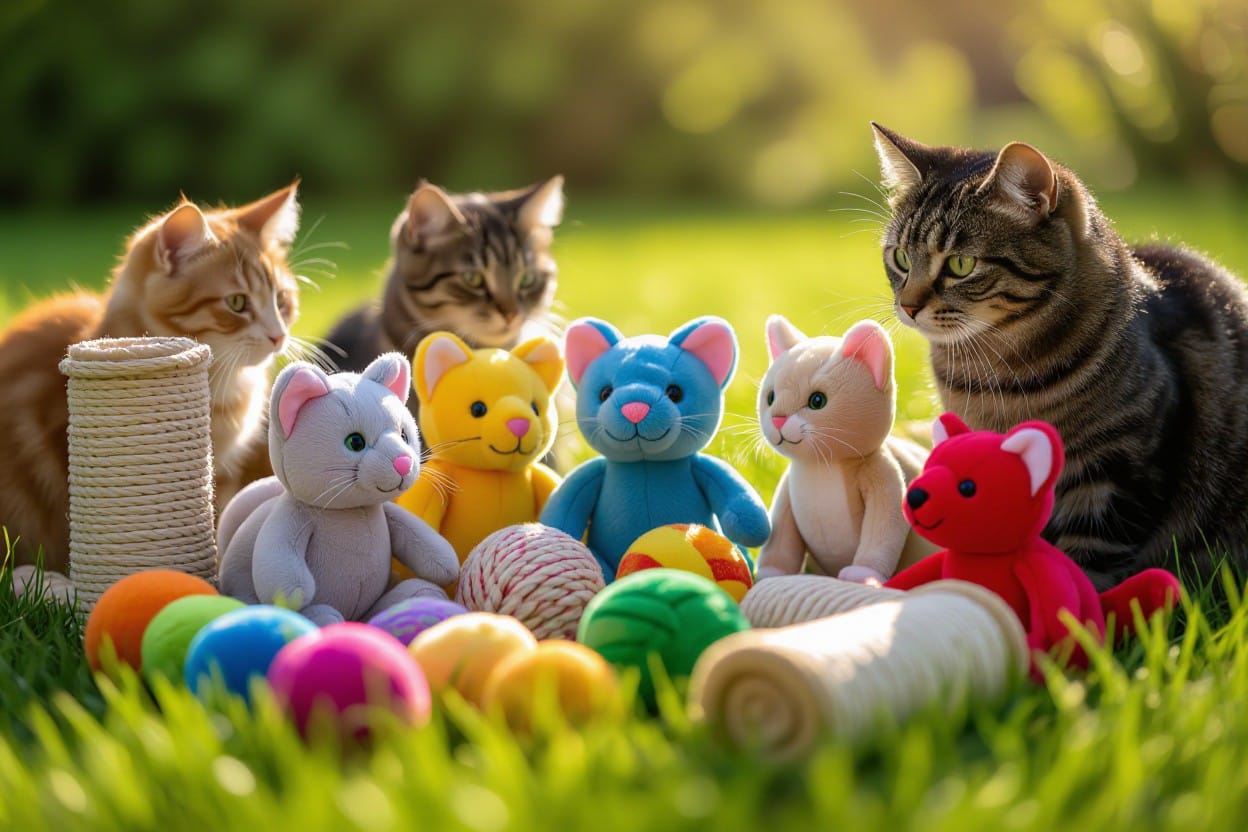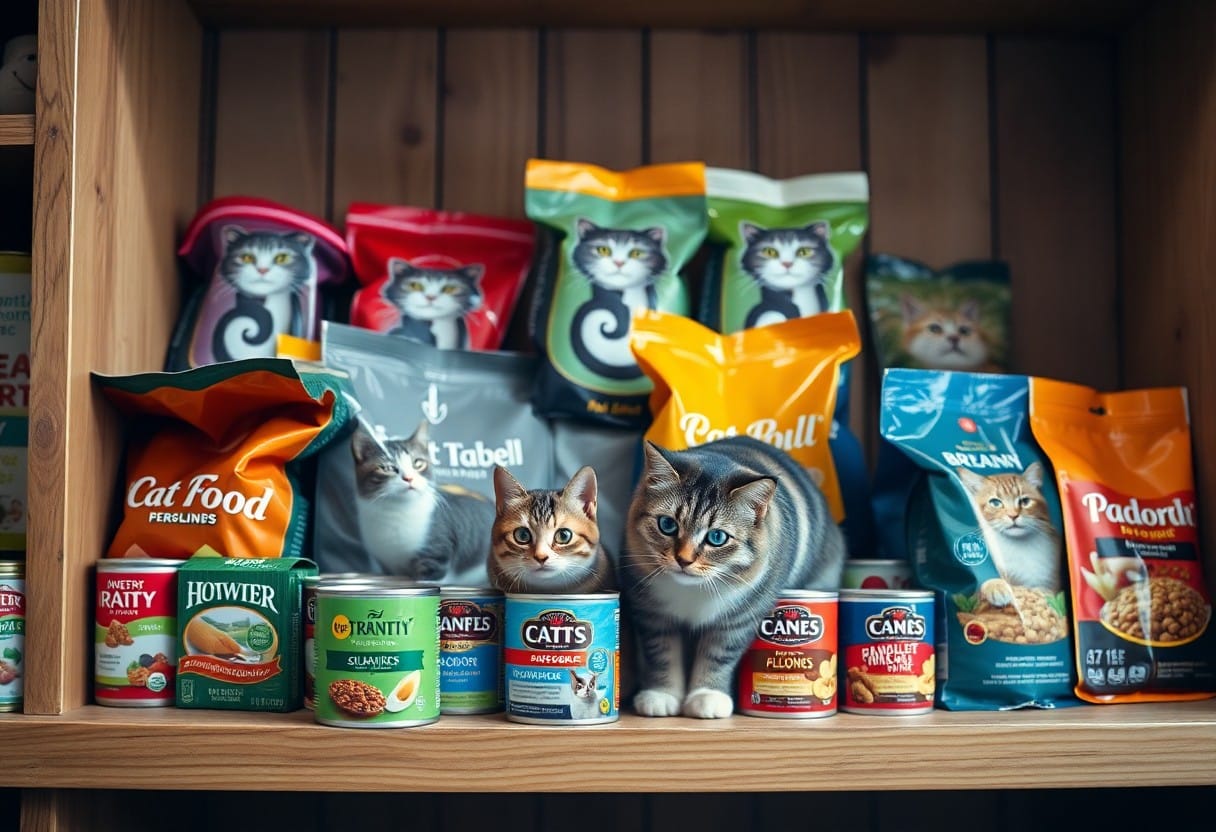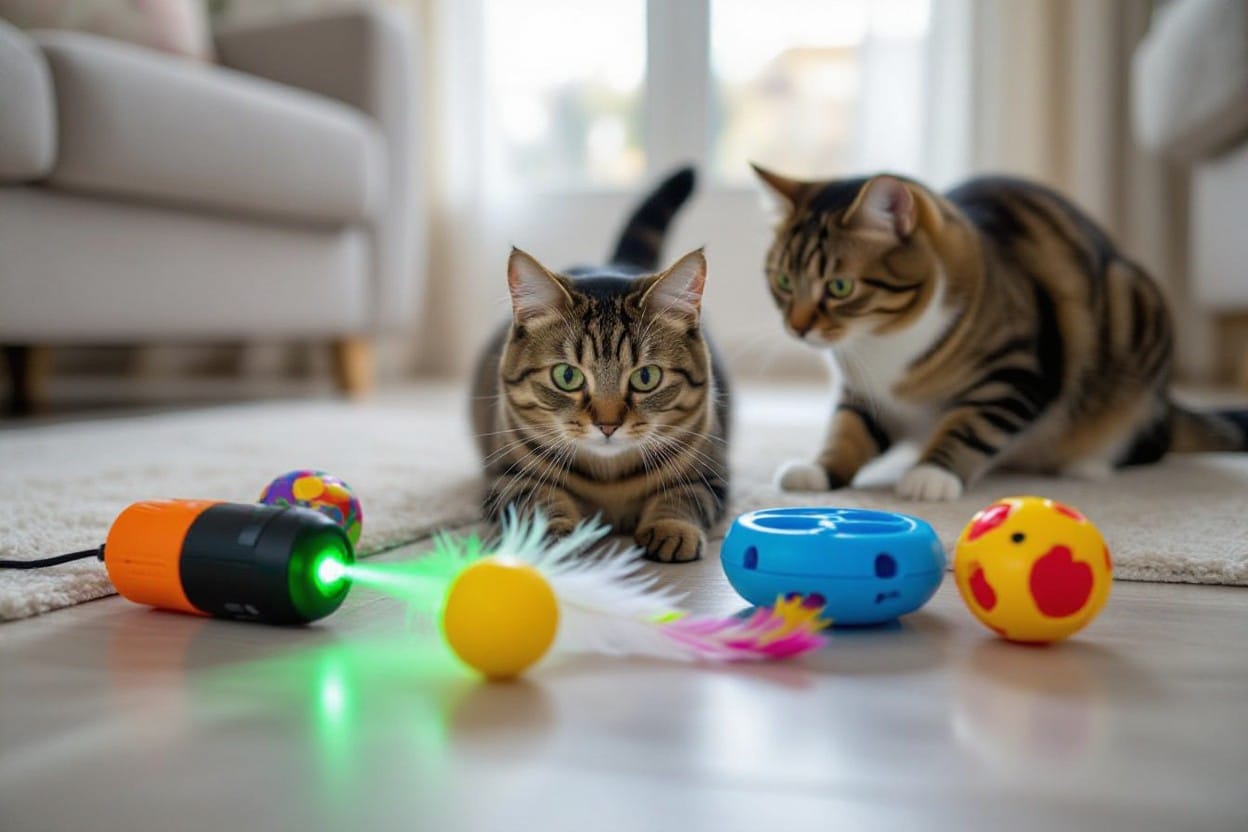You hold the power to ensure your feline friend thrives by selecting the right cat food brand. This decision is not just about filling a bowl; it’s about providing nutritional balance that can impact your cat’s health, energy levels, and overall well-being. With an overwhelming variety available, you might feel uncertain about the best choice. In this guide, you’ll discover key steps to follow, enabling you to navigate the landscape of cat food brands confidently and choose the healthiest options for your beloved pet.
Key Takeaways:
- Assess the nutritional needs of your cat based on their age, activity level, and health conditions to choose the appropriate cat food.
- Research reputable cat food brands, focusing on their ingredient quality, sourcing practices, and any veterinary endorsements.
- Consider your cat’s preferences and any dietary restrictions, opting for both dry and wet food options to provide a balanced diet.
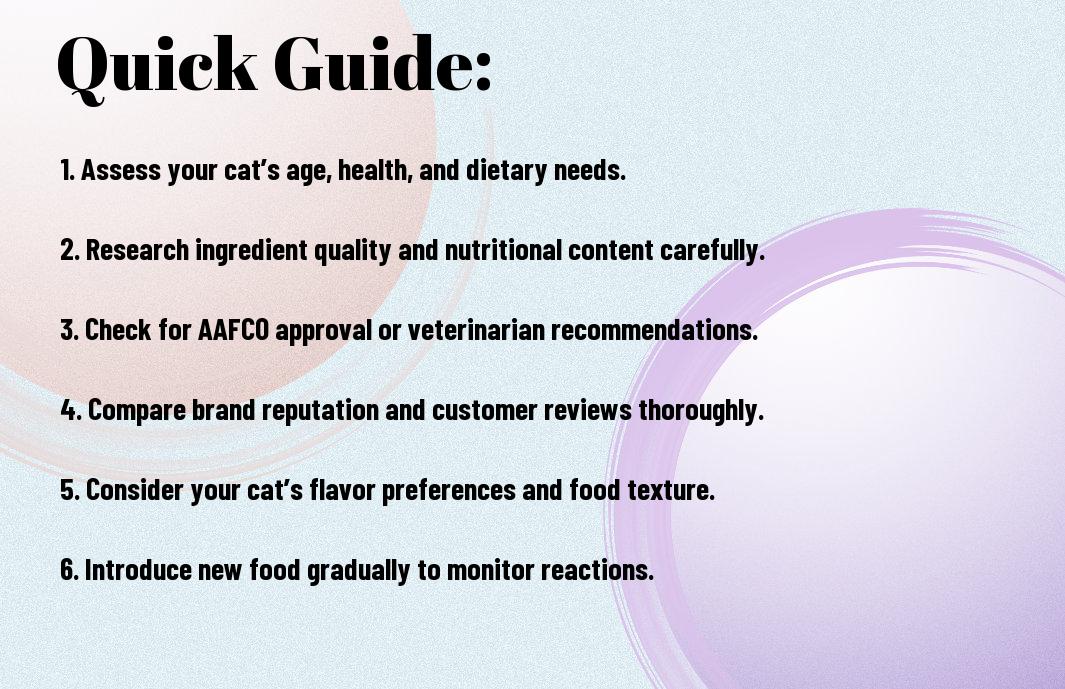
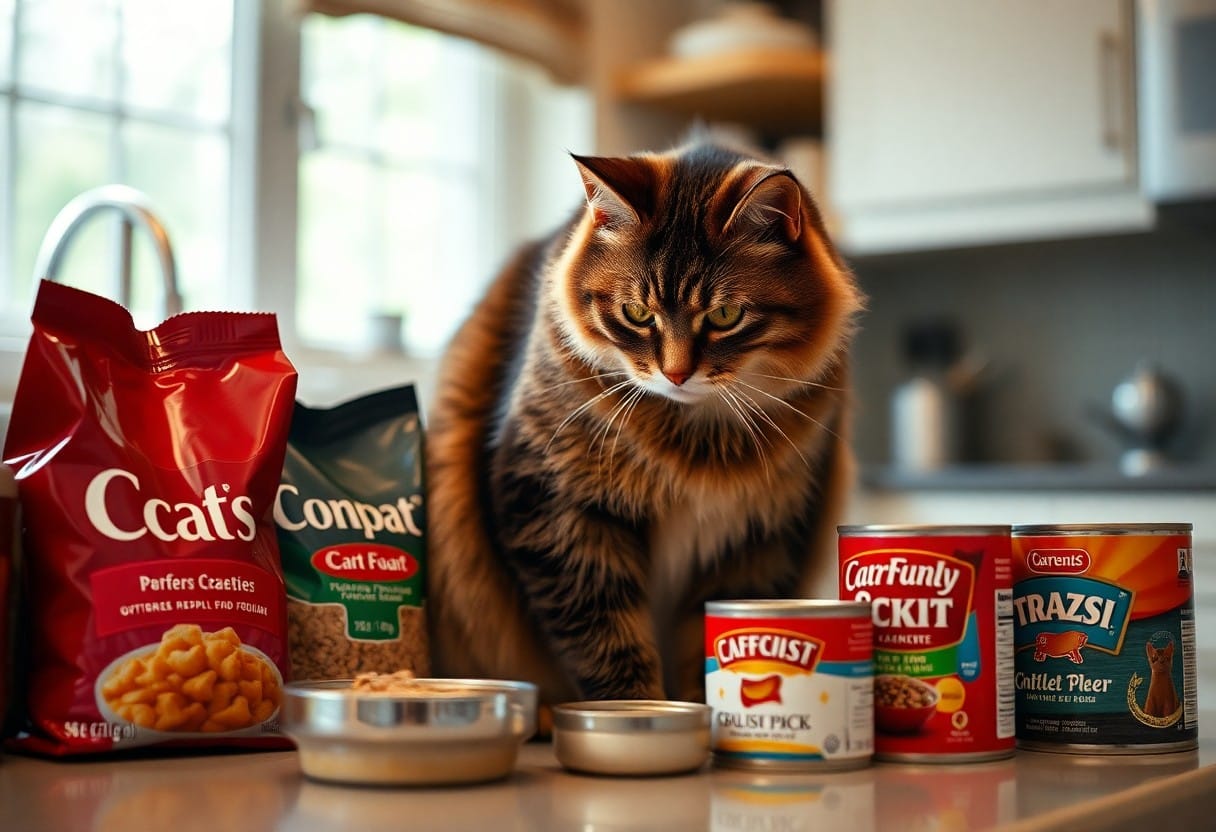
Understanding Types of Cat Food
While choosing the right cat food brand, it’s important to understand the various types available. Each type of food serves different nutritional needs and preferences for your feline friend. Here’s a quick breakdown:
| Type | Description |
|---|---|
| Dry Cat Food | Convenient, cost-effective, and helps dental health. |
| Wet Cat Food | Higher moisture content and often more palatable. |
| Raw and Freeze-Dried Options | Preserved raw ingredients, aligned with natural diets. |
| Specialty Diets | Formulated for specific health conditions. |
| Treats | Occasional snacks for additional flavor and rewards. |
Perceiving the right type of food can lead to a happier and healthier cat.
Dry Cat Food
While dry cat food is often the go-to choice for many pet owners due to its easy storage and affordability, it also plays a role in maintaining dental hygiene. The crunchy texture helps reduce tartar buildup as your cat chews, providing benefits beyond just nutrition.
Wet Cat Food
Food choices like wet cat food offer a higher moisture content, which is important for your cat’s hydration. Not only does it often appeal more to picky eaters, but it can also be a remedy for urinary tract health, making it a suitable option for many felines.
The higher protein and moisture levels in wet cat food can contribute to a balanced diet, especially for cats who might be reluctant to drink enough water. It’s often more aromatic and flavorful, enticing your kitty to enjoy their meals and stay hydrated.
Raw and Freeze-Dried Options
Options for raw and freeze-dried cat food focus on providing natural ingredients that mimic a cat’s ancestral diet. These foods are made from raw meats and are often minimally processed.
Plus, incorporating raw and freeze-dried options can provide your cat with healthier proteins, leading to improved digestion and vitality. However, take note that proper handling and storage are important to prevent contamination, ensuring your feline companion enjoys a safe and nutritious meal.
Key Factors to Consider
Some critical elements play a significant role when choosing a cat food brand. Consider the following factors:
- Nutritional needs
- Ingredient quality
- Life stage and health issues
The right brand will cater to your cat’s overall health and well-being.
Nutritional Needs
While evaluating cat food, consider your cat’s specific dietary requirements. They require a balance of proteins, fats, vitamins, and minerals to thrive. Choosing a food that meets these needs can support their energy levels and immune system.
Ingredient Quality
One key aspect to assess is the quality of ingredients in your cat’s food. High-quality ingredients usually contain real animal proteins, healthy fats, and necessary nutrients that will aid in your cat’s overall well-being.
To ensure you’re selecting a top-notch product, look for brands that use whole food ingredients and avoid those with artificial additives, by-products, or fillers. Opting for meat as the first ingredient indicates a protein-rich diet, which is necessary for your cat’s muscle development and overall vitality.
Life Stage and Health Issues
Ingredient selection also depends on your cat’s specific life stage and any health issues they might have. Tailoring their diet to their life stage is necessary to ensure they receive the proper nutrients they need.
It’s vital to consider factors such as age, weight, and existing health concerns. For instance, kittens have different nutritional needs compared to senior cats, requiring higher protein and calorie content. Additionally, if your cat has health issues like allergies or diabetes, consult with your vet for specialized dietary guidance.
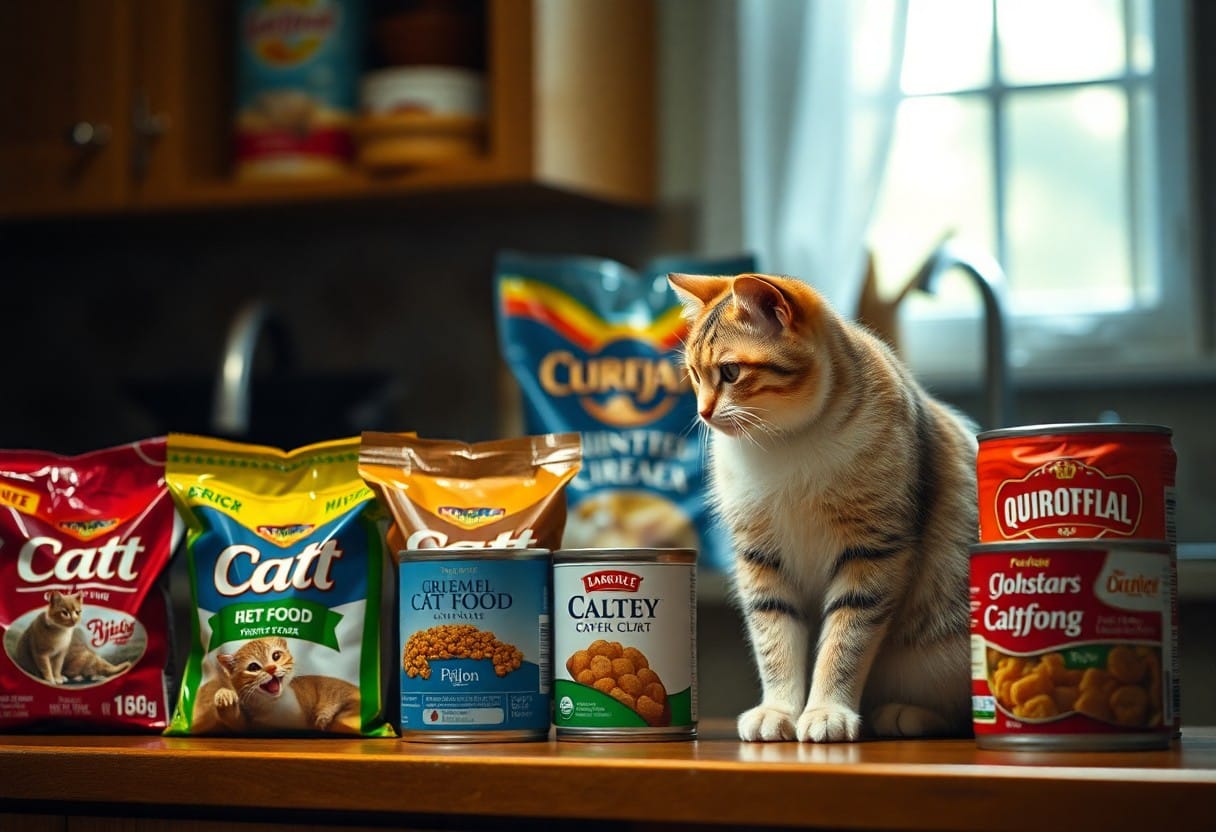
Tips for Choosing the Right Brand
Despite the overwhelming selection of cat food brands available, making the right choice for your feline friend doesn’t have to be daunting. Here are some tips to streamline your decision:
- Assess the ingredients list
- Check for quality assurance statements
- Investigate the brand’s history and practices
- Seek ethical sourcing information
- Look for specialized formulas for your cat’s needs
This will help you find a brand that aligns with your cat’s health needs and your values.
Research Brand Reputation
Assuming you want the best for your pet, researching a brand’s reputation is necessary. Look into their manufacturing practices, recalls, and any controversies. Ensure the brand prioritizes the health and well-being of pets.
Read Customer Reviews
Customer feedback can provide valuable insights into a brand’s performance. Reading through reviews allows you to gauge other pet owners’ experiences with specific brands.
Plus, evaluating reviews can reveal common issues such as adverse reactions or positive outcomes related to specific formulas. Look for patterns in feedback, like whether cats enjoy the taste or if owners have noticed health improvements.
Consult Your Veterinarian
Clearly, consulting your veterinarian is an effective step in making an informed choice. Your vet can recommend suitable brands based on your cat’s unique health profile.
The insight from your veterinarian is especially important if your cat has specific dietary requirements or health issues. They can guide you to brands that produce premium, nutrient-rich formulas while also alerting you to any harmful ingredients to avoid in commercial cat foods.
Common Mistakes to Avoid
To ensure your cat thrives, it’s vital to steer clear of common pitfalls when selecting a food brand. Many pet owners overlook important factors, leading to unhealthy choices for their feline friends. Stay informed to provide the best nutrition for your cat.
Ignoring Ingredient Labels
An ingredient label is your first line of defense in selecting the best cat food. Skipping this important step can result in your cat consuming low-quality ingredients or allergens that could impact their health.
Switching Foods Too Quickly
One common mistake is switching cat foods too fast, which can lead to digestive issues. A sudden change can upset your cat’s system, resulting in vomiting or diarrhea.
Foods should be transitioned gradually over a week or two to give your cat’s digestive system time to adjust. Start by mixing a small amount of the new food with their current food, slowly increasing the ratio of new food while decreasing the old. This gradual approach minimizes digestive upset and helps your cat adapt to the new flavors and textures.
Overlooking Special Dietary Needs
Avoid disregarding your cat’s unique dietary requirements. Failing to consider underlying health conditions can lead to serious complications, affecting your pet’s overall well-being.
Ignoring your cat’s special dietary needs can result in insufficient nutrient intake or exacerbate existing health issues. For example, senior cats or those with specific health concerns may require special formulations. Consulting your veterinarian can help you identify these needs and select a food that will support your cat’s health, ensuring they thrive for years to come.
